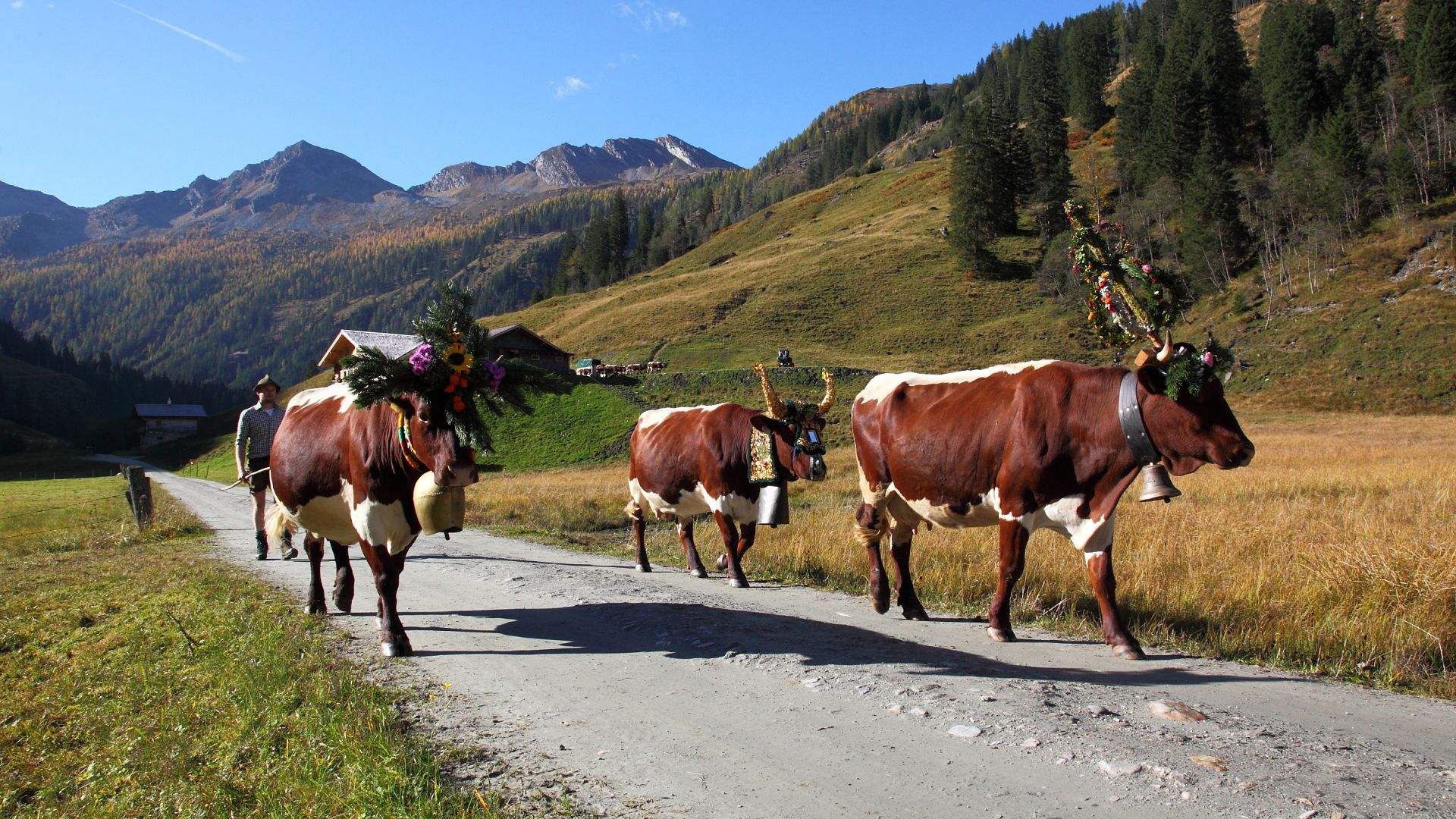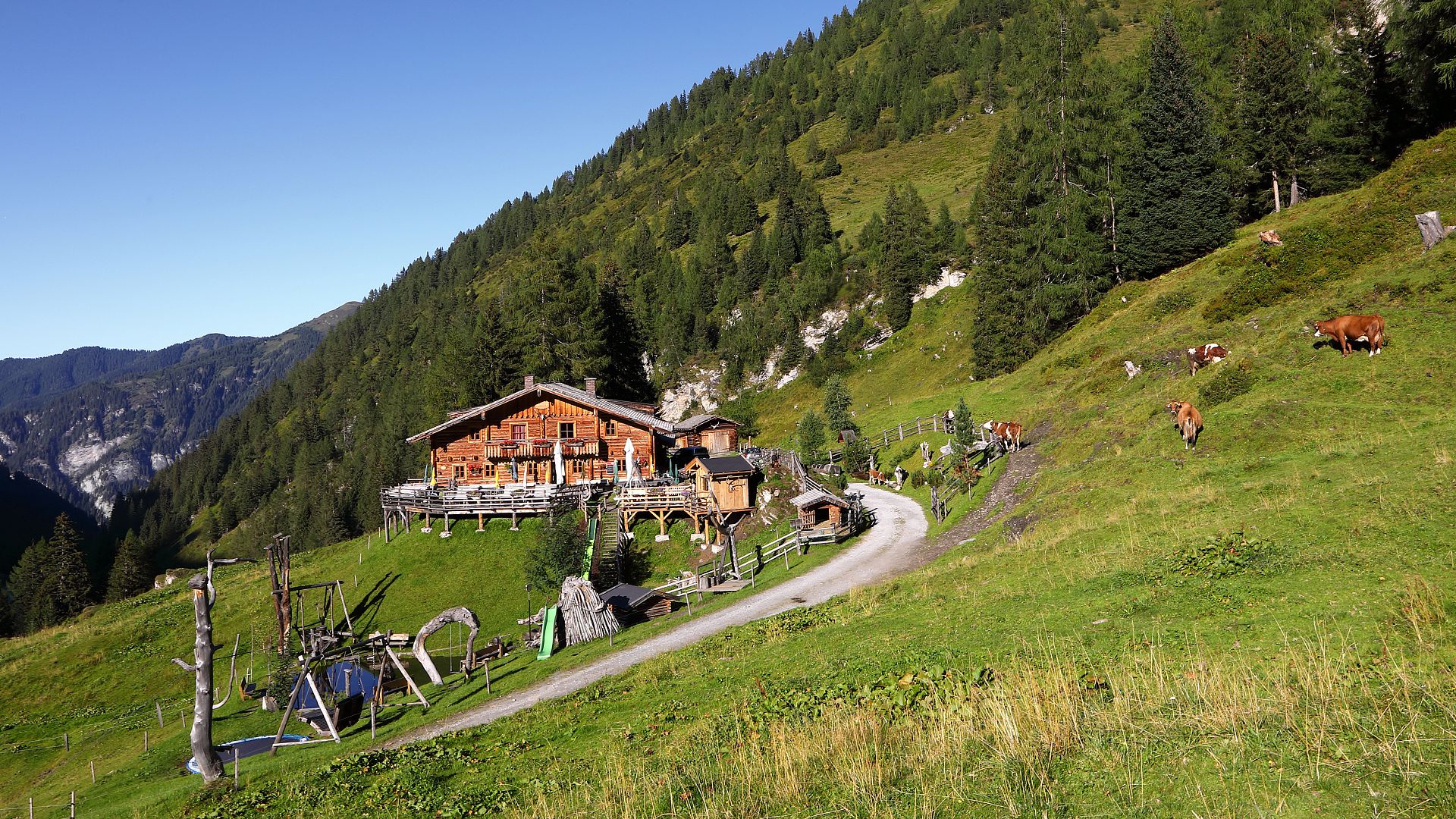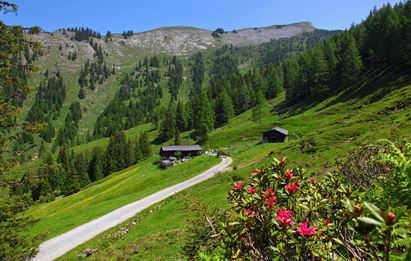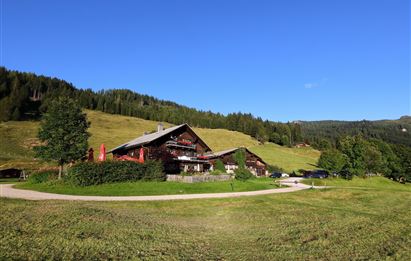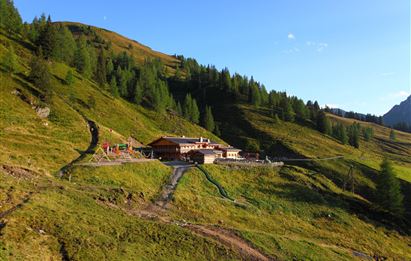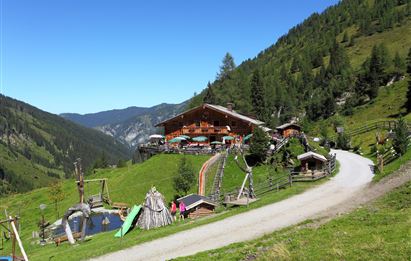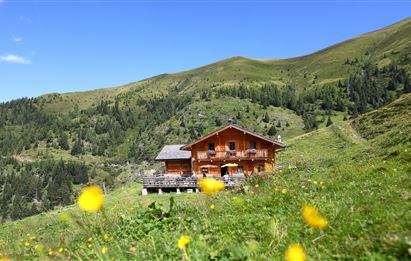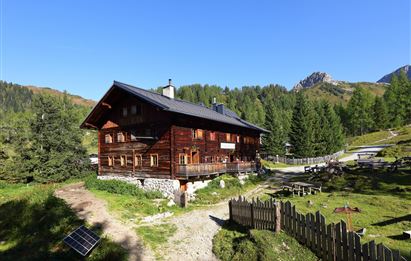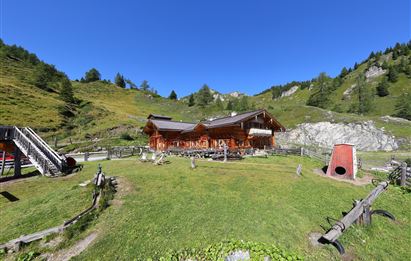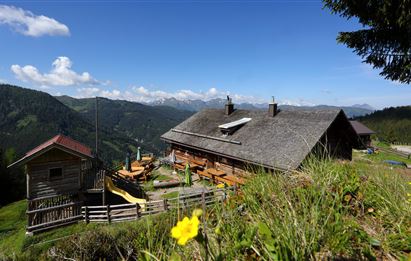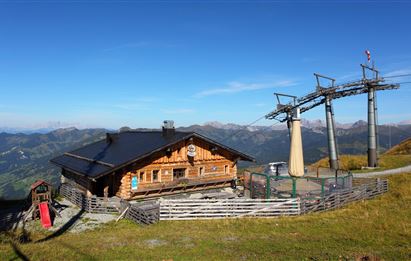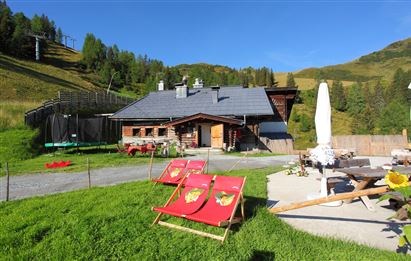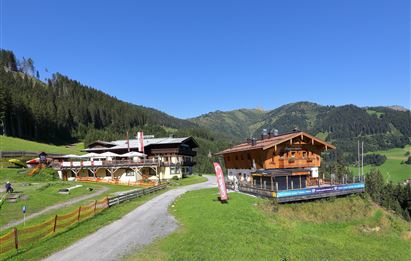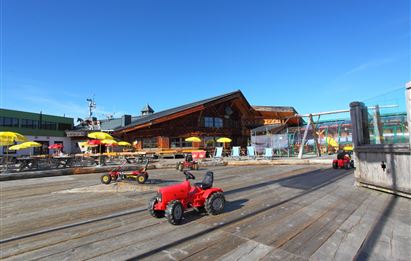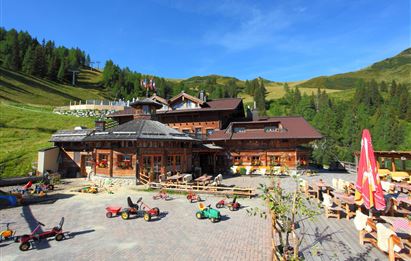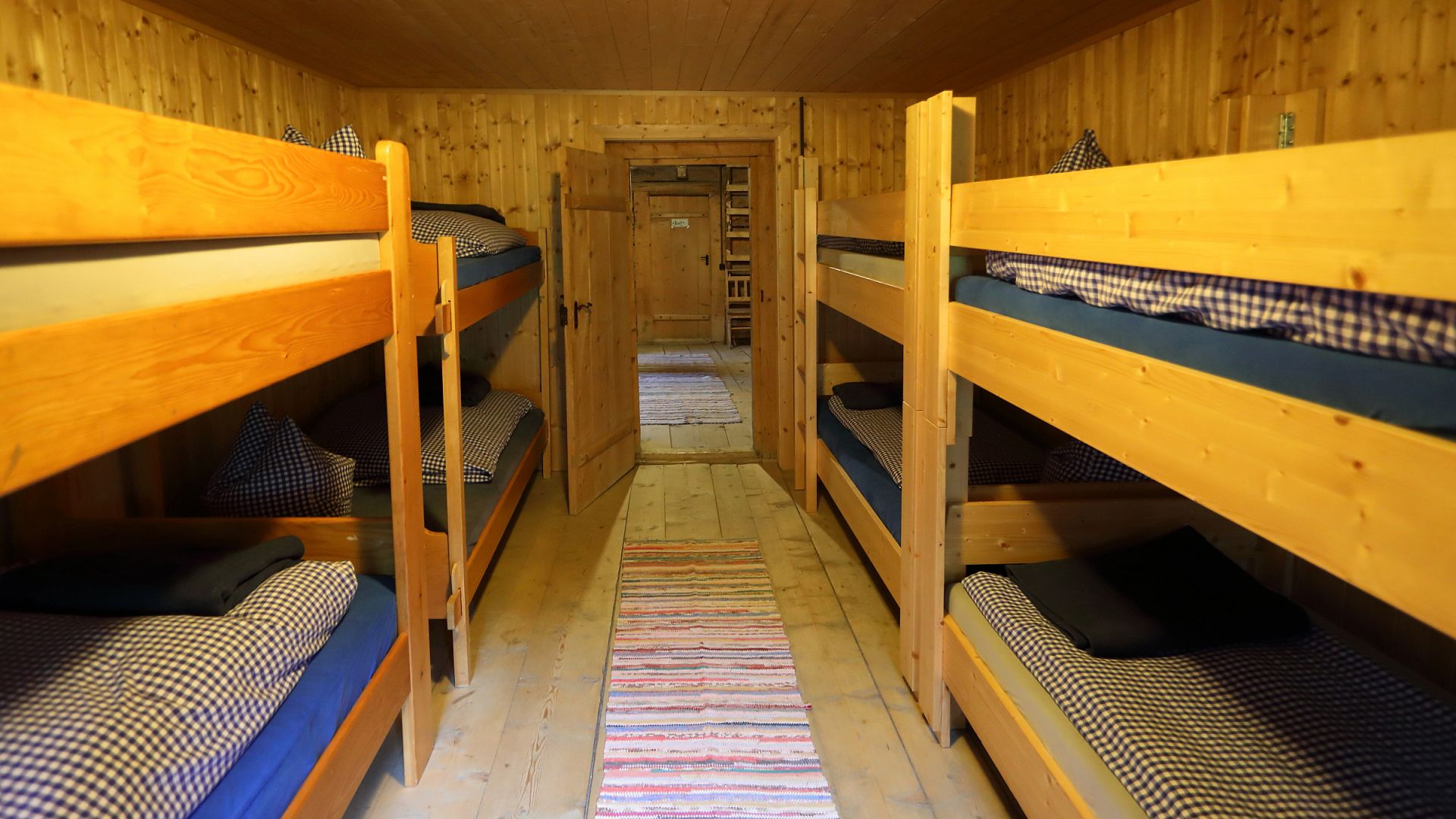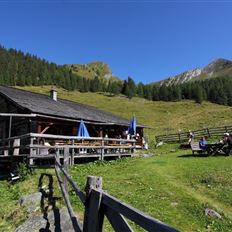Mountain Huts in Grossarltal
Everything about huts and alpine grazing areas in the Valley of Mountain Huts
Grossarltal is a valley renowned far beyond the Salzburg Alps for its abundance of mountain huts. What could be more splendid than savoring the breathtaking views of the surrounding Hohe Tauern range from a mountain hut in Grossarltal? And a true culinary delight to experience at one of these huts is a so-called “Brettljause”, a traditional platter featuring homemade products from the hill farmers of Grossarltal..
Contents
Valley of Mountain Huts
Grossarltal is also known as "The Valley of Mountain Huts," and it certainly lives up to that name. This Austrian vacation destination boasts around 40 staffed mountain huts, inviting visitors to come hiking, mountain biking and, of course, stop by for well-earned refreshments. Due to its abundance of huts, Grossarltal stands out as being unique not just in the Salzburg region, but likely across all of Austria as well.
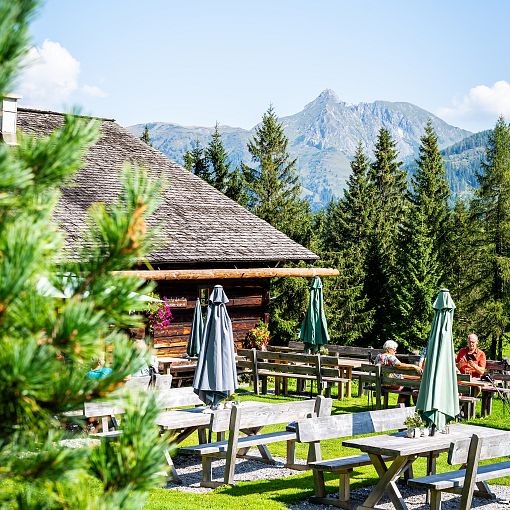

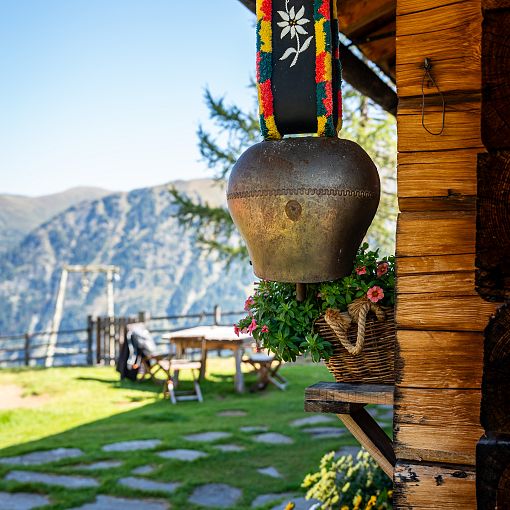
Hut Opening Times
Depending on weather conditions in the mountains, the first huts open their doors in mid-May. The majority of huts then follow suit, opening in early to mid-June. These huts generally remain open until September, whilst some even extend their season into October..
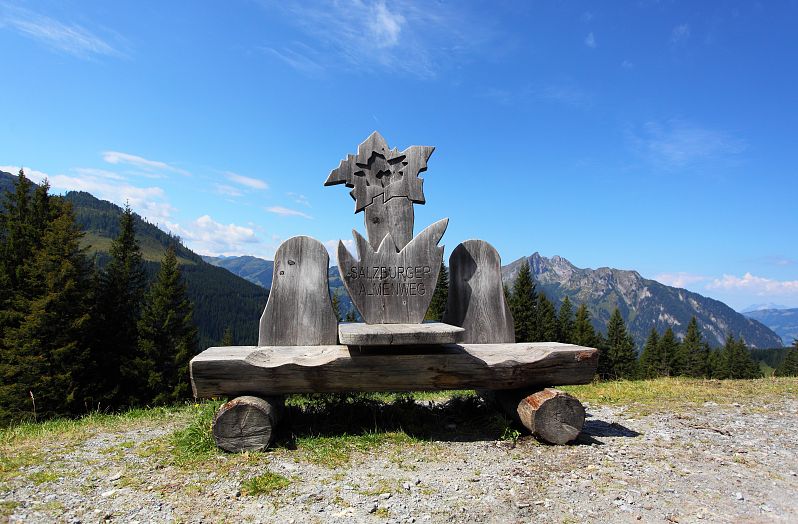
Perhaps you've noticed the symbol for the Salzburger Almenweg whilst hiking through the Valley of Mountain Huts? The image of the gentian flower accompanies you along the entire route. You'll find it on benches, trail signs, and at the mountain huts, which are an important element of the Salzburger Almenweg.
The Salzburger Almenweg is a long-distance hiking trail that stretches some 350 km across the entire Salzburger Pongau region. The trail is divided into 25 stages, with four of these passing through Grossarltal itself.
Hikers are warmly welcomed at the mountain huts in Grossarltal, where the hill farmers treat them to their homemade specialties. Since the legs of the Salzburg Almenweg are mostly day-long stages, hikers often require overnight accommodations. Many mountain huts in Grossarltal offer this, providing a great opportunity to immerse yourself in the authentic Alpine lifestyle of Austria.
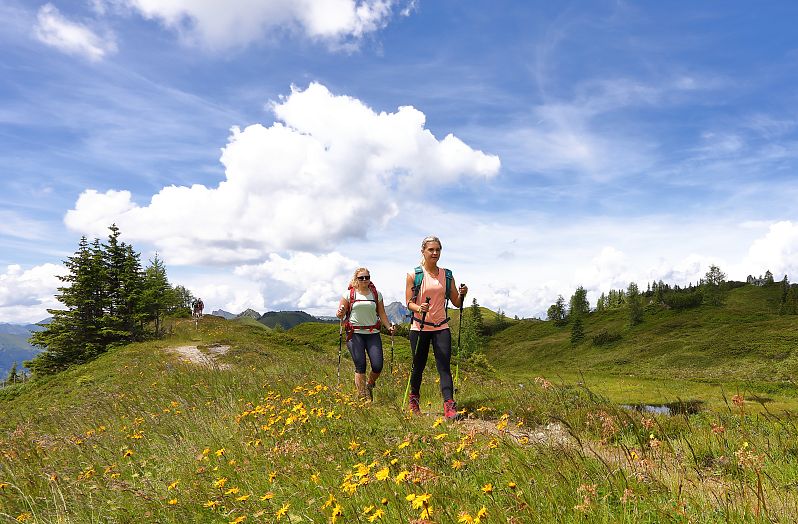
Some mountain huts are conveniently reachable from the trailhead in just a half-hour hike, while getting to higher-elevation huts typically takes around 1 ½ to 2 hours. Almost all mountain huts are accessible either by a hiking trail through stunning alpine meadows and forests, or by means of a gravel forest or service road.
You may have noticed a freight lift alongside the path while in Grossarltal. Many of these are remnants from the past and are no longer in use, but for some huts, these lifts are indispensable. They are the means by which hill farmers transport the materials, products, and tools they need up to their mountain huts. For example, there are no actual forest roads that lead all the way up to the Draugsteinalmen, the Hühenerkaralm, or the Modereggalm.
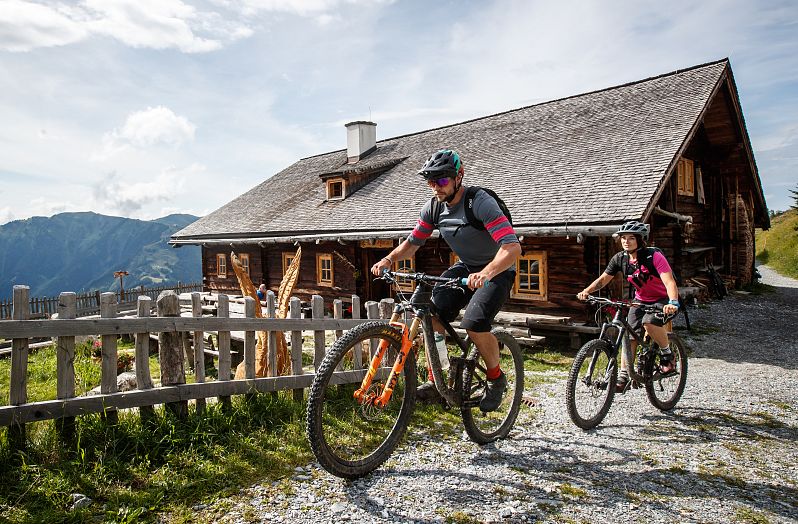
The region isn't just a hiker's paradise; it's also a haven for all you mountain bikers and e-bikers! In addition to the bike path running through the Valley of Mountain Huts, many huts are easily accessible by bike. You'll have to conquer significant elevation gains to get to these huts, but your efforts are amply rewarded with stunning views of the surrounding alpine landscapes and a mouthwatering bite to eat.
Accessibility
The mountain huts in Grossarltal aren't just accessible by foot or mountain bike. In numerous instances, you can also reach huts by car, hiking taxi, or even by riding up an a gondola.
Car
The following mountain huts can be reached by private car:
- Breitenebenalm
- Loosbühelalm
- Aualm
Note: In order to drive up to the Loosbühelalm & Aualm, you'll need to deposit €5.00 (in coins) at the gate for it to open automatically.
Hiking Taxi
The Hiking Taxi is the perfect mode of transport no matter what kind of hiker you are. The taxi serves numerous trailheads for hikes and mountain tours in Grossarltal. Upon request, this taxi shuttle can also bring you up to various mountain huts throughout the valley.
Gondola
It’s also possible to travel to higher elevations in a matter of minutes here in the Valley of Mountain Huts. The Grossarltal Panorama Gondola takes you up to the Grossarltal-Dorfgastein ski area, which offers plenty to explore during the summer months as well. Once you're at the top, you'll find numerous ski lodges that remain staffed during the summer season.
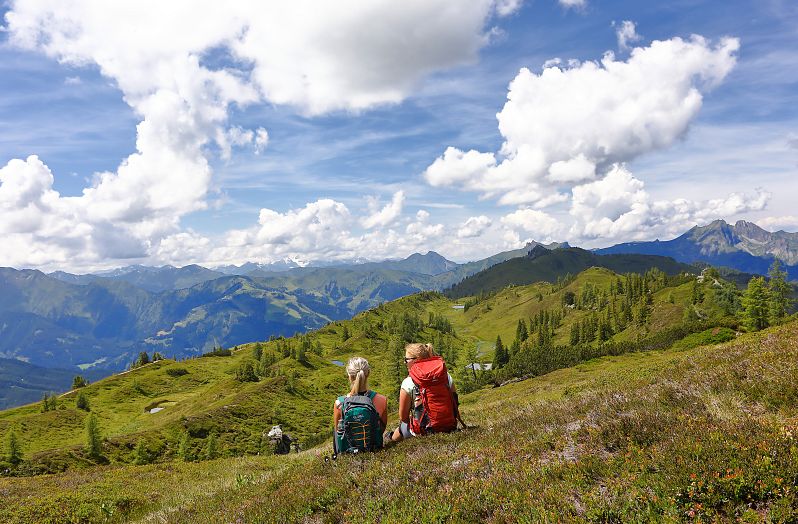
A mountain vacation works wonders for the soul, and that's why multi-day hikes are particularly popular in Grossarltal. The Valley of Mountain Huts offers hikers numerous opportunities to trek from one hut to the next. You can tailor each day's stage to your liking, whether it involves ascending to a ridge, summiting a peak, or visiting an alpine tarn, before descending to a cozy mountain hut for the night. Rest assured, Grossarltal has the perfect multi-day hike to suit everyone.
Life at a Mountain Hut
Visitors who come to the Valley of Mountain Huts highly value the warm hospitality and friendly services offered at the huts. But hill farming isn't just about catering to hikers and bikers; it involves a lot more, much of which takes place early in the morning.
These tasks are part of daily life at a mountain hut:
- milking cows
- feeding animals
- make various products out of milk
- clean everything
- prepare for the hikers
- and much more
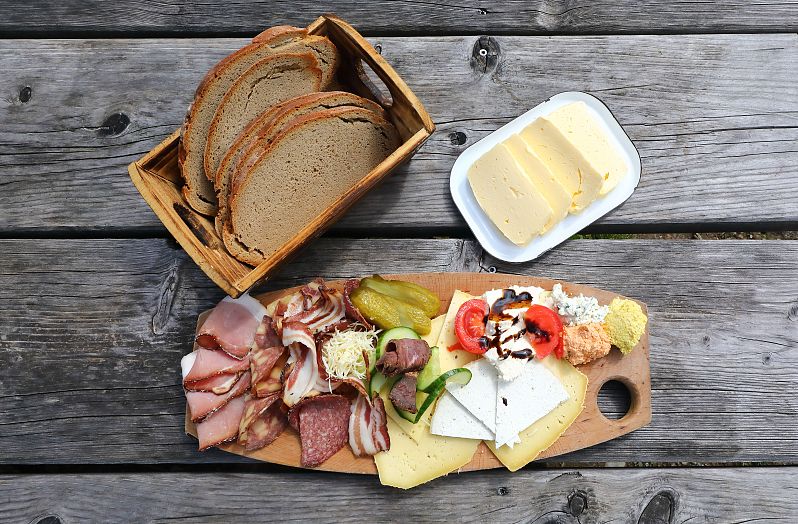
For many hikers and bikers, enjoying a traditional mountain snack is a “must” when stopping at a hut in Grossarltal. These hearty snacks, known as a “Brettljause”, mainly consist of homemade products. Many of those products are actually made right there on the mountain, while the remaining delicacies come directly from a farm in the valley.
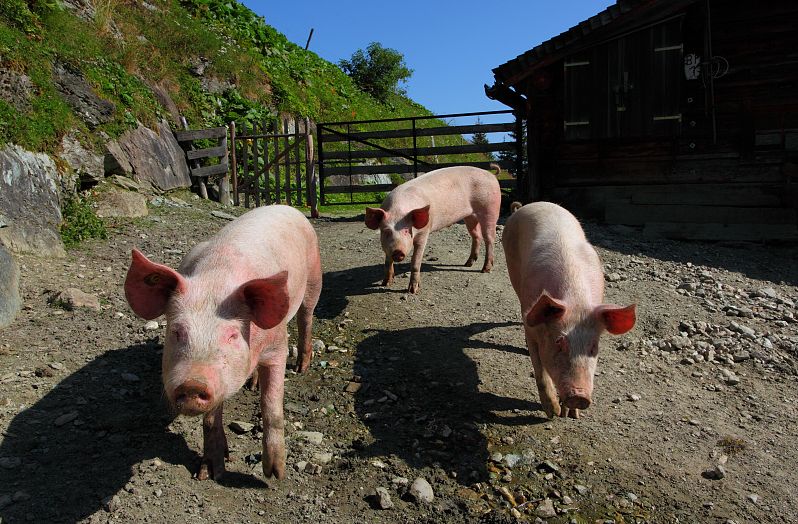
In addition to the hill farmers themselves, many animals also enjoy their summer on the mountain pastures. Cows, sheep, horses, goats, chickens, pigs, rabbits, and cats all look forward to Alpine Summer. The nutrient-rich herbs in the alpine regions make the various animal products—such as butter, cheese, and milk—something truly special.
But these animals serve an important purpose beyond just providing us with delicious products. They also help maintain the diverse cultural landscape of the mountains and contribute to land conservation. By grazing the grassy areas, the animals keep the pastures here healthy and resilient.
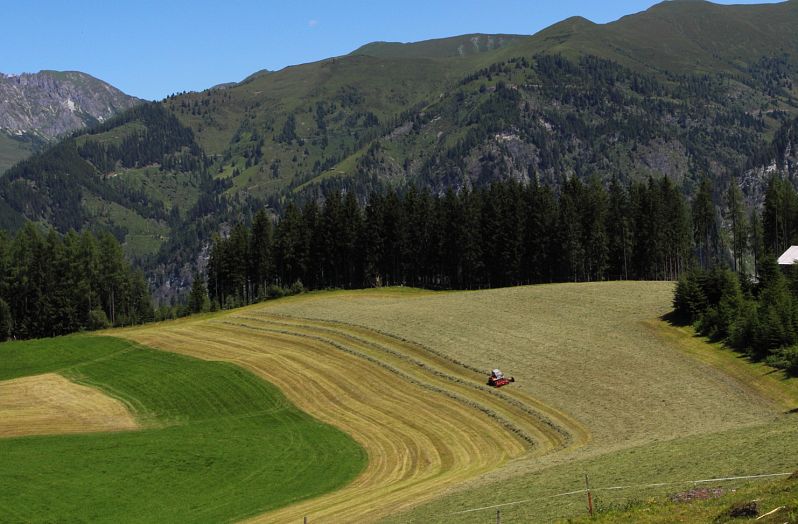
The two most crucial factors in landscape management are mowing and grazing the alpine meadows. Grazing is important not just for the animals but also for the landscape, since otherwise, the land would quickly become overgrown. Without proper land management, not only would the alpine region become wild and untamed, but the risk of avalanches in winter would also increase. If the alpine meadows are not mowed and grazed, monotonous grasslands soon take over, leading to a decline in the variety of animal and plant species.
